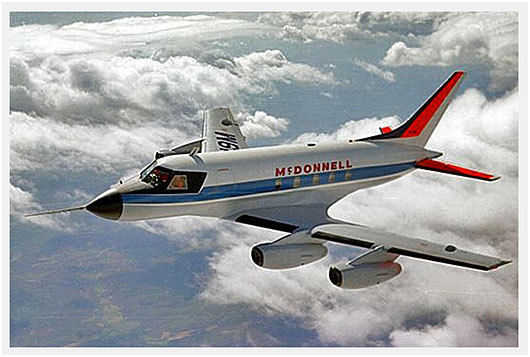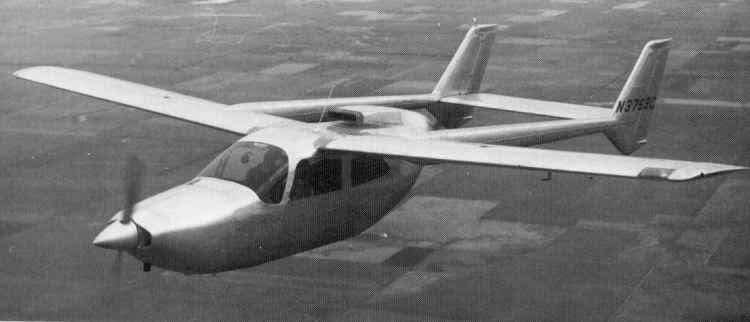I looked at a Lear Fan, and spoke with Mrs. Lear (following Bill Lear’s passing) in the early ’80’s. The aircraft was fascinating. It’s challenge was mixing completely new structural technology, with a very new powerplant system. The result probably boggled the FAA. Either on its own might have found a way through certification, but the combination was too much.
The two engines into one propeller was a problem. It was not a true twin engined aircraft in the certification sense. The approach taken was to consider it like a multi engine helicopter. You can loose an engine okay, but not the drive system nor rotor. There was a really cool gearbox design, I studied the cutaway carefully. It had helical gears, such that each gear could loose an entire tooth, and the gearbox would still work adequately for a while. For loss of lubrication, there was a block of wax bolted into the gearbox. If the oil was lost, the gearbox would get hot. If that happened, the wax would melt, and coat the gears for a while. When the wax melted, a set of contacts cast into the wax would then spring closed, and close a circuit. That illuminated a cockpit light, which could be interpreted to mean get it on the ground quick, you’ve not got long. 30 minutes was the time stated.
I also heard that there were concerns about how the composite structure would handle a lightning strike. I know that the Diamond D Jet considered this a real risk, and the ones which I saw being built were entirely covered in a fine copper mesh. I guess it helped with lighting, but certainly prevented the bad people scanning your credit cards!
Ultimately, the Lear Fan would have been a hard sell for a world used to a true multi engined aircraft, but it sure was innovative!
I don’t know about the charter market, but Beechcraft if not under Chapter 11…
Not any more, but in 2012. We had a KA90 in our fleet till recently, but for everything that a CJ can do in an hour the KingAir was more expensive. And for the single customer we had who needed the short field capability it wasn’t worth keeping it in the fleet and have a current and type rated crew. It was a good aircraft and didn’t require a lot of maintenace. For a private owner-flyer who doesn’t need to go much further than 500 to 700 NM it would be good value for money.
Yes, of course. The King Airs, even the big ones, can land on grass for example and need much shorter runways.
But what really killed the Starship was Cessna with their CitationJets. They developed them with the aim of sweeping Beechcraft from the market. In their adverts from the 1990ies they always compared the CJs to the KingAirs: Faster, cheaper to buy, cheaper to operate. Ultimately they achieved their goal, Beechcraft is operating under chapter 11 and the KingAir has almost vanished from the charter market.
I don’t know about the charter market, but Beechcraft if not under Chapter 11, they are part of Textron Aviation now, as are Cessna. There is a gradual coming together of the two companies. The King Air is not the target for Citation sales people, there is a realisation that the aircraft does a different job, and the two can co-exist in the Textron line up.
what next,
very intersting! Yes, I believe the Citation played a part in that … but personally I find the Starship much cooler :-)
Also I think a used C90 King air is still a good deal. You can have it for a fraction of what a TBM costs, and although slower and more thirsty that’s a really good and safe tool. Unfortunately my company is too small to have such an airplane. But i guess it could be operated safely from our 750 m glider field next to the company … Look at this one: http://www.planecheck.com?ent=da&id=25284
what next,
the take-off data i got for the Starship was 4100 ft at MTOM for the earlier models and 3900 ft for the later models, but maybe those were wrong?
I don’t know which figures to believe… In the mid 1990ies I had a share in an air taxi company and Beechcraft Augsburg invited us to see a Starship they wanted to sell and had on display either at the Aero Friedrichshafen or at the ILA exhibition (can’t remember which). So we went to see that thing. We talked about figures with the representative, and knowing that JAR-OPS with factored landing distances was about to come, performed a little arithmetic and discarded the whole project right away. The factored landing distance was close to 1500m/5000ft which makes it almost unuseable for a business aircraft in Europe. I probably remembered that figure from then.
But what really killed the Starship was Cessna with their CitationJets. They developed them with the aim of sweeping Beechcraft from the market. In their adverts from the 1990ies they always compared the CJs to the KingAirs: Faster, cheaper to buy, cheaper to operate. Ultimately they achieved their goal, Beechcraft is operating under chapter 11 and the KingAir has almost vanished from the charter market.
In the vein of this thread the Cessna 620 was interesting…. I guess four piston engines wasn’t the right solution.
With the model 119/220 McDonnell tried something similar, but with four turbojet engines. Unfortunately, not a single buyer wanted to sign the contract:

In the vein of this thread the Cessna 620 was interesting…. I guess four piston engines wasn’t the right solution.

But while not ‘proof of concept’ I like the swoopy mini Skymaster that apparently wasn’t judged good enough to perform like a twin Comanche.

I have that picture somewhere, will investigate next week. That was a funny design!
In the back of the book “Those incomparable Bonanzas” there is a picture of a twin engined Bonanza. Now that’s not the Twin Bonanza, but a “regular” Bonanza with two engines “sandwiched” inside the front cowling, both driving the same prop. Sorry, no copy of that photo on the internet, it seems.
In the book, the author speculates that it didn’t materialize because the FAA would not certifiy it without a “firewall” between the two engines.
They did a lot of such “crazy” stuff in the good old days, when R&D budgets were still significant in piston GA…sigh!